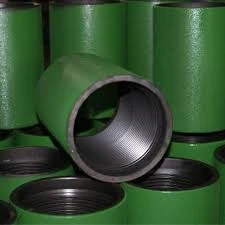- Afrikaans
- Albanian
- Amharic
- Arabic
- Armenian
- Azerbaijani
- Basque
- Belarusian
- Bengali
- Bosnian
- Bulgarian
- Catalan
- Cebuano
- Corsican
- Croatian
- Czech
- Danish
- Dutch
- English
- Esperanto
- Estonian
- Finnish
- French
- Frisian
- Galician
- Georgian
- German
- Greek
- Gujarati
- Haitian Creole
- hausa
- hawaiian
- Hebrew
- Hindi
- Miao
- Hungarian
- Icelandic
- igbo
- Indonesian
- irish
- Italian
- Japanese
- Javanese
- Kannada
- kazakh
- Khmer
- Rwandese
- Korean
- Kurdish
- Kyrgyz
- Lao
- Latin
- Latvian
- Lithuanian
- Luxembourgish
- Macedonian
- Malgashi
- Malay
- Malayalam
- Maltese
- Maori
- Marathi
- Mongolian
- Myanmar
- Nepali
- Norwegian
- Norwegian
- Occitan
- Pashto
- Persian
- Polish
- Portuguese
- Punjabi
- Romanian
- Russian
- Samoan
- Scottish Gaelic
- Serbian
- Sesotho
- Shona
- Sindhi
- Sinhala
- Slovak
- Slovenian
- Somali
- Spanish
- Sundanese
- Swahili
- Swedish
- Tagalog
- Tajik
- Tamil
- Tatar
- Telugu
- Thai
- Turkish
- Turkmen
- Ukrainian
- Urdu
- Uighur
- Uzbek
- Vietnamese
- Welsh
- Bantu
- Yiddish
- Yoruba
- Zulu
Exploring Various Types of Tubing Solutions for Diverse Applications
The Versatile World of Tubing Products
In today’s fast-paced industrial environment, tubing products have become indispensable across various sectors, from manufacturing to healthcare, automotive to telecommunications. Tubing serves as a fundamental component that facilitates the conduction of fluids and gases, the transmission of electrical signals, and even serves structural purposes in numerous applications. This article will explore the diverse types of tubing products, their applications, and the factors that influence their selection.
Types of Tubing Products
1. Metal Tubing Metal tubing is often used in applications requiring durability and resistance to high pressures and temperatures. Common materials include stainless steel, copper, and aluminum. Stainless steel tubing is frequently employed in the food and beverage industry due to its resistance to corrosion and ability to withstand high temperatures. Copper tubing, on the other hand, is widely used in plumbing and HVAC systems due to its excellent thermal conductivity.
2. Plastic Tubing Plastic tubing is lightweight, flexible, and resistant to corrosion, making it ideal for various applications. Materials such as polyvinyl chloride (PVC), polyethylene (PE), and polyvinylidene fluoride (PVDF) are commonly used in the production of plastic tubes. PVC tubing is prevalent in irrigation systems, while PE tubing is often used in gas distribution. Its versatility in terms of flexibility and resistance to chemicals makes plastic tubing a popular choice in the pharmaceutical and food industries.
3. Rubber Tubing Rubber tubing is renowned for its flexibility and ability to withstand extreme temperatures. Various types of rubber, including natural rubber, silicone, and nitrile, offer unique properties suited to specific applications. Silicone rubber tubing is commonly utilized in medical applications because of its biocompatibility and resistance to extreme temperatures, while nitrile rubber is preferred in automotive applications due to its oil resistance.
4. Composite Tubing Composite tubing combines multiple materials to leverage the strengths of each, often resulting in lightweight yet strong products. These tubes are typically used in aerospace and defense applications, where high strength-to-weight ratios are crucial.
Applications of Tubing Products
1. Healthcare and Medical In the medical field, tubing products are vital for various applications, including IV lines, catheters, and respiratory equipment. The materials used must meet strict regulatory standards to ensure patient safety, making biocompatible materials such as silicone and specific medical-grade plastics highly sought-after.
2. Automotive The automotive industry utilizes various tubing products for fuel lines, brake lines, and air conditioning systems. Tubing must be durable enough to handle exposure to heat, pressure, and chemicals, leading to the use of materials such as rubber and reinforced plastic.
tubing products

3. Construction and HVAC Tubing plays a crucial role in construction, particularly for plumbing and heating, ventilation, and air conditioning (HVAC) systems. Standard PVC or copper tubes are used for water supply lines, while specialized tubing is used in gas distribution systems.
4. Industrial and Manufacturing In industrial settings, tubing is employed in hydraulic systems, pneumatic systems, and process control. The choice of tubing material can significantly impact performance, affecting factors such as flow rate, pressure resistance, and chemical compatibility.
Choosing the Right Tubing Product
When selecting the appropriate tubing product, several factors must be considered
- Material Compatibility The tubing material must be compatible with the substances it will carry, whether liquids, gases, or electrical signals. - Temperature and Pressure Ratings Understanding the expected temperature and pressure conditions ensures that the chosen tubing can withstand operational demands.
- Regulatory Compliance Industries such as healthcare and food processing require strict adherence to regulatory standards; thus, selecting products that meet these criteria is essential.
- Flexibility and Strength Depending on the application, the required flexibility and strength of the tubing can influence material choice.
- Cost-effectiveness Budget considerations play a significant role in the selection process. Assessing the balance between quality and cost is crucial for long-term viability.
In conclusion, tubing products are a vital feature of numerous industries, offering solutions that address unique challenges. By understanding the different types of tubing and their applications, manufacturers and engineers can make informed decisions that enhance efficiency and safety in their operations. As technology advances, the future of tubing products holds even more possibilities for innovation, leading to improved performance and applications in an ever-evolving marketplace.
-
Tubing Pup Joints: Essential Components for Oil and Gas OperationsNewsJul.10,2025
-
Pup Joints: Essential Components for Reliable Drilling OperationsNewsJul.10,2025
-
Pipe Couplings: Connecting Your World EfficientlyNewsJul.10,2025
-
Mastering Oilfield Operations with Quality Tubing and CasingNewsJul.10,2025
-
High-Quality Casing Couplings for Every NeedNewsJul.10,2025
-
Boost Your Drilling Efficiency with Premium Crossover Tools & Seating NipplesNewsJul.10,2025







